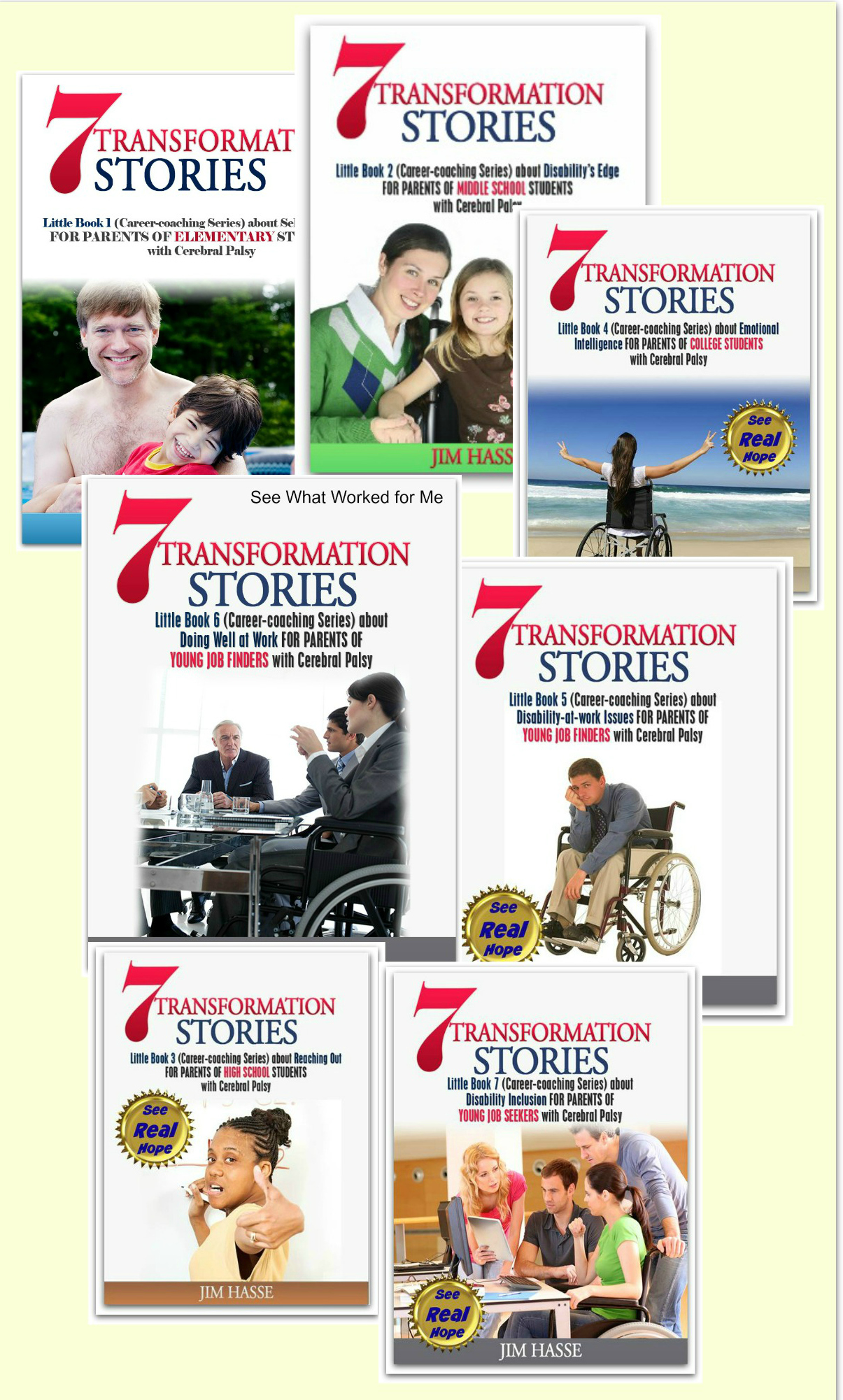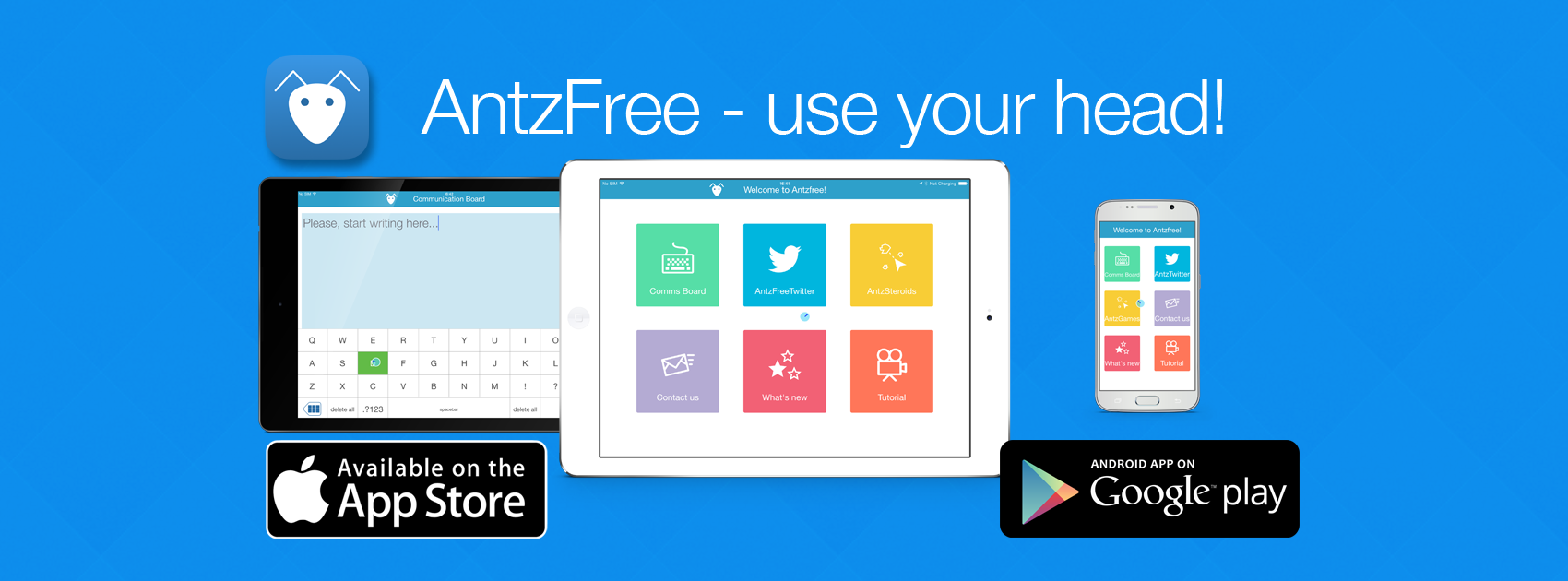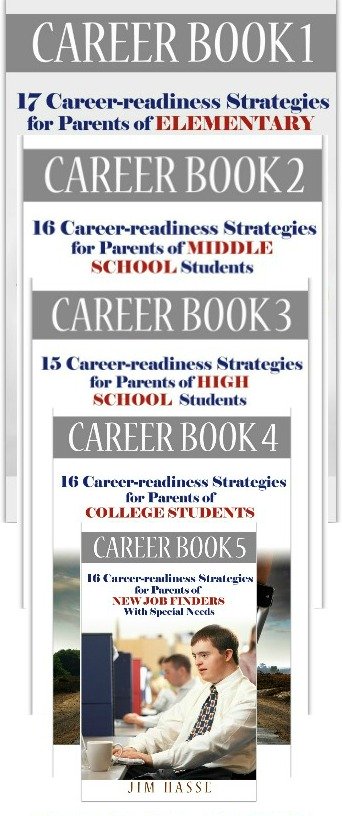Assistive Technology Devices: Cerebral Palsy Career Builder for Middle School
By Jim Hasse, ABC, GCDF, Disability Employment Expert
_________________________________________________________
Let’s look at the assistive technology devices available today for impairments which may affect how well your middle school student with cerebral palsy (CP) does in school and as well as on a future job.
Increasingly, impairments
due to CP are largely becoming irrelevant factors in how your youngster can perform in school,
at home, and in future work --all because of remarkable advances in assistive technology devices.
The job Accommodation Network (JAN) is a service of the U.S. Department of Labor’s Office of Disability Employment Policy. It offers an online Searchable Online Accommodation Resource (SOAR) system to let users explore various assistive technology devices for people with disabilities in educational settings and in work.
SOAR divides potential accommodations into four broad disability categories: cognitive/neurological impairments, deaf/hard of hearing impairments, motor impairments and visual impairments.
Let’s take a look at the assistive technology currently available for hard of hearing and motor impairment categories, since they are probably the most applicable to the needs of your junior high school student with CP.
Deaf/hard-of-hearing impairments
This category includes individuals who are completely deaf or have partial hearing in one or both ears. They may be able to communicate through sign language or read lips and may have a slight to severe speech impairment due to hearing loss. They may need hearing protection or noise abatement equipment.
Check this partial list of frequently requested devices that SOAR includes on its web site for people with hearing
impairments:
- Alerting Devices.
- Amplified Stethoscopes.
- Assistive Listening Devices.
- ASR/Voicewriting.
- Automated TTY System.
- Cellular Telephone Technology.
- Cochlear Telephone Patch Cords.
- Communication Access Realtime Translation (CART) Services.
- Hearing Protection.
- Noise Abatement.
- Noise Canceling Headsets.
- Paging Products and Services.
- Personal Paging Devices.
- Portable Text Communicators.
- Realtime and Off-line Captioning Services.
- Telephone Amplification.
- Telephone Clarity.
- Telephone Flashers.
- Tinnitus Maskers/ Environmental Sound Machines.
- TTYs.
- TTY Software.
- Vibrating Watches and Alarms.
- Video Relay Services.
- Video Remote Interpreting Services (VRI).
- Voice Mail Transcription.
Go to the details about
each of the above assistive technologies and the vendors which have them
available.
Motor impairments
Motor impairments include various types of physical
disabilities which affect upper limbs, manual dexterity, lower limbs and
muscular coordination of various parts of the body – impairments usually
associated with CP.
What assistive
technology
has helped your youngster
participate more fully in a school setting?
Join PACER’s Facebook
discussion.
Here is a sample of the frequently requested assistive
technology devices that SOAR includes on its web site for people with motor
impairments:
Alternative Input Devises
- Alternative Keyboards.
- Alternative Mice.
- Expanded Keyboards.
- Keyguards.
- LCD Pen Tablet Displays.
- Left Hand-Dominant Keyboards.
- Miniature Keyboards.
- On-Screen Keyboards.
- On-Screen Keyboard Software.
- One-Handed Keyboards.
- One-Handed Keyboard Software.
- Optical Character Recognition (OCR).
- Speech Recognition Software.
- Switches.
- Ten Keypads.
- Word Prediction/Completion and Macro Software.
Anti-Fatigue Matting
Book Holders
Building Access
- Elevators
- Emergency Evacuation Devices.
- Stair Lifts.Ramps.
Carts
- Motorized Carts.
- Multi-Purpose Carts.
Chairs, Cushions, and Stools
- Assist Lift Cushions.
- Chairs and Stools for Medical Services.
- Ergonomic/Adjustable Office Chairs.
- Forward Leaning Chairs.
- Large-Rated Chairs.
- Nonfluorescent Lighting.
- Stand Lean Stools.
Doors
- Automatic Door Openers.
- Door Handles.
- Knob Grips.
- Force Measurement Gauges.
Ergonomic and Other Office Equipment
- Accessible Copiers.
- File Carrousels.
- Forearm Supports.
- Headsets.
- Money Handling Products.
- Mousing Surfaces.
- Remote Control Blinds.
- Slant Boards.
- Typing Aids.
- Writing Aids.
Lifting Devices
- Compact Lifting Devices.
- Page Turners.
Software
- Ergonomic Software.
- Form Generating Software.
- One Handed Keyboard Software
Tools
- Anti-Vibration Material.
Ergonomic/Pneumatic
Tools.
- Tool Balancers
Workstations
- Accessible Workstations (Industrial).
- Accessible Workstations (Office).
- Supine Workstations.
Check the details for each of the above devices and the vendors which have them available.
JAN also provides accommodation ideas for specific
disabilities. See Accommodation
Ideas for Cerebral Palsy.
These accommodation ideas are not all inclusive, of course, because assistive technology is continually changing. If you do not find answers to your questions, please contact JAN directly. Its staff of experienced consultants is ready to discuss specific assistive technology devices for your youngster with CP in a confidential manner.
What assistive
technology
has helped your youngster
participate more fully in a school setting?
Join PACER’s Facebook
discussion.
Return from Assistive Technology Devices to Career Test
Go to Cerebral Palsy Career Builders
This is Creative Commons content. You can freely and legally use, share and repurpose it for non-commercial purposes only, provided you attach this sentence and the following attribution to it (including the two links):
Originally written and illustrated by Jim Hasse, ABC, GCDF, owner of Hasse Communication Counseling, LLC, who, as a person with cerebral palsy, served for 10 years as a vice president in a Fortune 500 company during his 29-year career in corporate communication. He’s an Accredited Business Communicator, certified as a Global Career Development Facilitator and author of 14 Amazon books about disability awareness and disability employment issues.






